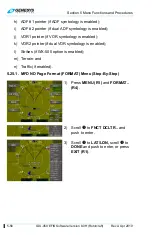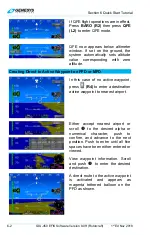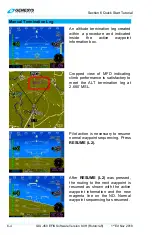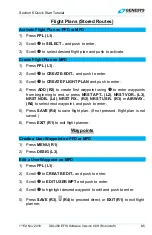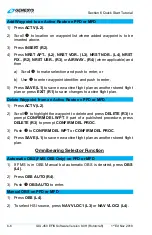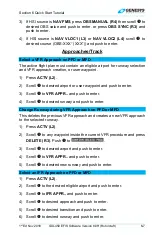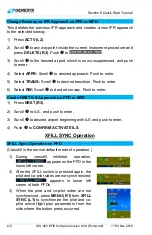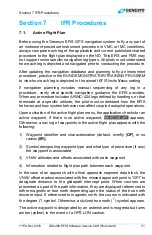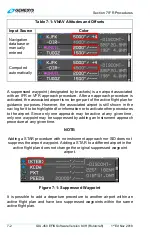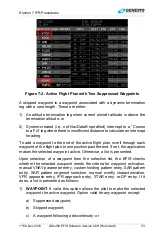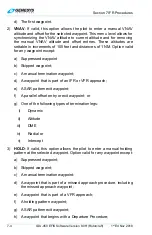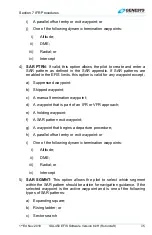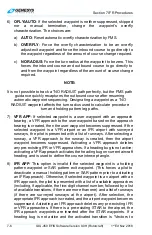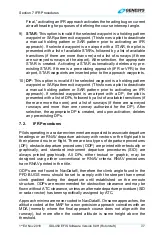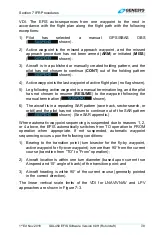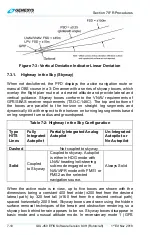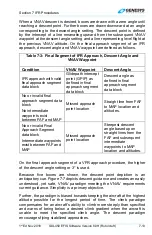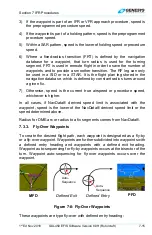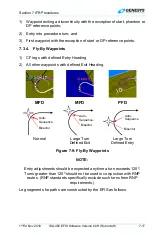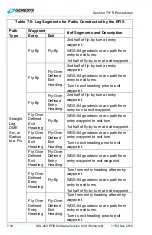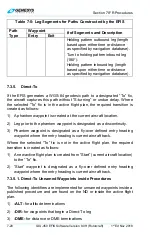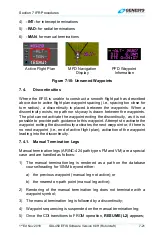
Section 7 IFR Procedures
7-6
IDU-450 EFIS Software Version 8.0H (Rotorcraft)
1
st
Ed Nov 2018
6)
OFLY/AUTO
: If the selected waypoint is neither suppressed, skipped
nor a manual termination, change the waypoint’s overfly
characterization. The choices are:
a)
AUTO
: Reset automatic overfly characterization by FMS.
b)
OVERFLY
: Force the overfly characterization to be an overfly
adjust-exit waypoint and force the inbound course to go directly to
the waypoint regardless of the amount of course change required.
c)
NO RADIUS
: Force the turn radius at the waypoint to be zero. This
forces the inbound course and outbound course to go directly to
and from the waypoint regardless of the amount of course change
required.
NOTE:
It is not possible to track a “NO RADIUS” path perfectly, but the FMS path
guidance quickly recaptures the outbound course after resuming
automatic waypoint sequencing. Designating a waypoint as a “NO
RADIUS” waypoint affects the turn radius used to calculate procedure
turn and holding pattern leg paths.
7)
VFR APP
: If selected waypoint is a user waypoint with an approach
bearing, a VFR approach to the user waypoint based on the approach
bearing is created, then the user waypoint becomes suppressed. If the
selected waypoint is a VFR airport or an IFR airport with surveyed
runways, the pilot is presented with a list of runways. After selecting a
runway, a VFR approach to the runway is created, then the airport
waypoint becomes suppressed. Activating a VFR approach deletes
any pre-existing IFR or VFR approaches. If a heading bug is not active;
activating a VFR approach activates the heading bug on current aircraft
heading and is used to define the course intercept angle.
8)
IFR APP
: This option is invalid if the selected waypoint is a holding
pattern waypoint or SAR pattern exit waypoint. (This forces a pilot to
deactivate a manual holding pattern or SAR pattern prior to activating
an IFR approach). Otherwise, If selected waypoint is an airport with an
IFR approach, the pilot is presented with a list of available approaches
(including, if applicable, the five-digit channel number, followed by a list
of available transitions, if there are more than one) and a list of runways
(if there are surveyed runways at the airport). After selection, the
appropriate IFR approach is created, and the airport waypoint becomes
suppressed. Activating an IFR approach deletes any pre-existing IFR
or VFR approaches. If there is a pre-existing STAR to the airport, the
IFR approach waypoints are inserted after the STAR waypoints. If a
heading bug is not active and the activated transition is “Vectors to

